Waze isn’t your typical navigation app. Its roots lie in a community-driven model, where users contribute traffic data in real-time. This setup means that if there’s a sudden jam on the highway, other users might get notified before they even reach it. It’s all about having many eyes on the road, bringing a sense of shared navigation.
What sets Waze apart is how it takes real-time info from its millions of users to optimize your route. Because user updates are so frequent, Waze offers dynamic rerouting, which can be a lifesaver when trying to beat rush hour or dodge unexpected traffic snarls. For those who drive regularly, that means potentially saving a heap of time.
Waze also shines when it comes to suggesting alternative routes. It’s not just about taking the main road or highway—Waze might guide you through a quieter side street to shave minutes off your journey. This feature can bring a pleasant change of scenery for travelers or people who want to try a different path than usual.
Waze’s main pull is this combination of user-contributed intelligence wrapped with intelligent tech. But, like all tools, its usefulness depends on how well it fits into your daily driving routine.
The Downside of People-Powered Direction: Challenges with Waze
Waze relies heavily on user-generated data to function, sometimes leading to inaccuracies. If a user marks an event on the map by mistake or forgets to update when things change, it can confuse those relying on the app for real-time updates. Issues like incorrect traffic alerts or misplaced road hazards can lead to detours that might not save time or could even add stress to your drive.
There’s also the matter of privacy. While having access to real-time community-generated updates is an advantage, it means sharing your location and travel habits with the app and potentially other users. This can concern those who prefer to keep their driving habits private. Understanding how your data is collected and used is crucial in deciding if Waze is right for you.
Another point to consider is how much we depend on technology. With apps like Waze handling our navigation, there’s a risk of losing touch with essential map reading and orientation skills. Relying solely on digital navigation can leave you in a bind in situations where your phone battery dies, or you lose service. It’s helpful to occasionally revert to traditional skills like reading road signs and maps as backup strategies.
Weighing the Pros and Cons: Making an Informed Choice
Choosing whether to use Waze largely depends on individual driving habits and what you need from a navigation tool. Waze can be a game-changer in daily commutes for those who thrive on real-time updates and are comfortable sharing data. Its vibrant community of users provides insights that can be incredibly useful for navigating congested areas or unknown routes.
A relatively big drawback is that the WAZE app cannot generate a route with multiple stop points. There is only one intermediate point to put in.
Still, balancing Waze’s advantages with its potential drawbacks is crucial. When determining if it’s the best fit for you, consider its privacy implications and how its reliance on user data can lead to occasional inaccuracies. Assessing how much you rely on technology for navigation may also guide your decision. Keeping traditional navigation methods in your toolkit is always wise.
Examining the broader picture and other navigation options that might better suit specific needs or habits is also beneficial. Various apps focus more on privacy, offer offline capabilities, or present other unique features. Understanding Waze’s place within this spectrum of available tools helps create a comprehensive personal navigation strategy.
As technology evolves, the future of navigation apps promises more advancements and features. Whether Waze or another tool fits your needs today, staying informed about emerging trends and updates in this space can help ensure you’re using the best tool for your journey.
As an Amazon Associate I earn from qualifying purchases.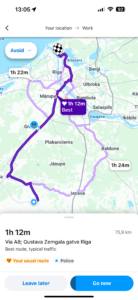


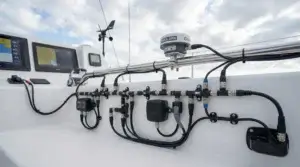

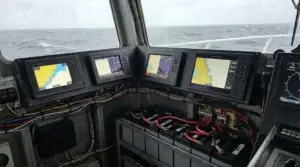
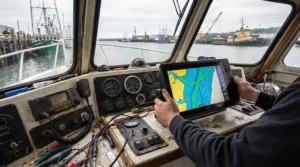
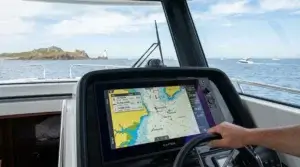
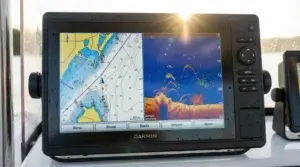

Thank you for this review on Waze, but I think I trust Google Maps more than I trust user generated information, as it can get inaccurate. Do you know if there are any fees involved in downloading Waze, as it will be interesting to take a look at the system and see how easy it is to navigate.
Thanks for the comment! The Waze app is free, and there is no hidden fee. I’ve been using Waze for five years now. As I mentioned in the article, some loopholes could be improved, but this is, I think, the only navigation app where you can see a real-time police hideout and stationary and mobile speed cameras—similarly, road repairs, hazardous driving weather, and many other very useful information for the motorist.
Great insights on Waze and its community-driven approach! I’ve used Waze during my daily commutes, and the real-time updates have definitely saved me from getting stuck in traffic more times than I can count. However, I’ve noticed that occasional inaccuracies, like outdated hazard reports, can sometimes throw off my route. I’m curious—have you experienced any specific scenarios where Waze rerouted you in an unexpected but helpful way? Additionally, I agree with the point about balancing tech reliance with traditional skills; having a backup plan like a physical map has saved me when my phone died on a road trip. What’s your take on that?
Thank you for sharing your experience! I completely agree that Waze’s real-time updates are a game-changer, especially for daily commutes. Regarding your question about unexpected but helpful reroutes, I’ve had a few instances where Waze took me through unfamiliar neighborhoods to avoid major highway backups, and while I was skeptical at first, it ended up saving me a ton of time. That said, the occasional outdated hazard report can definitely be a little frustrating, but I find that the frequent community updates help minimize that.
As for balancing tech with traditional skills, I’m right there with you. Having a backup like a physical map or even jotting down directions beforehand can be a lifesaver in situations where tech fails. It’s a good reminder not to put all our eggs in one basket when it comes to navigation. How do you typically prepare for longer trips to ensure you’re covered if tech issues arise?
This is a great post discussing the disadvantages of using Waze for navigation! I love how you’ve highlighted both the strengths and the potential drawbacks of this popular app. While Waze is fantastic for real-time traffic updates and finding the quickest routes, it’s important to be aware of the issues, such as inconsistent route suggestions and reliance on user-generated data, which can sometimes be inaccurate. From my experience, Waze is perfect for avoiding traffic jams, but I’ve occasionally found that it leads me down less reliable or more complicated routes, especially in unfamiliar areas.
One question I have is: How do you recommend balancing Waze with other navigation apps like Google Maps or Apple Maps, especially when you need a more accurate or straightforward route? I’ve found that sometimes it’s helpful to double-check routes across different apps to avoid unexpected detours. Also, how can users customize Waze’s settings to ensure they’re getting the most efficient routes without overcomplicating things?
Overall, this post offers valuable insights into the limitations of Waze, which can help users make more informed decisions about their navigation app choices. Thanks for sharing these helpful tips!
Thank you for your thoughtful and detailed comment! You’ve raised some excellent points about the strengths and potential drawbacks of Waze, especially when it comes to navigating unfamiliar areas. Balancing Waze with other navigation apps like Google Maps or Apple Maps can definitely enhance your overall navigation experience.
To answer your question, here are a few tips:
Compare Routes Across Apps: Before starting your journey, you can quickly check the suggested routes on Waze, Google Maps, and Apple Maps. This gives you a sense of which app offers the most reliable or straightforward route for your specific needs. Google Maps, for instance, is often better for offering clear directions in less-traveled areas, while Waze excels in urban settings with heavy traffic.
Customize Waze Settings: To get the most efficient routes, go to Waze’s settings and:
Enable or disable features like “Avoid tolls” or “Avoid ferries” based on your preferences.
Adjust the “Route Options” to match your priorities (e.g., fastest route vs. shortest distance).
Fine-tune alerts for hazards, traffic, and police reports so you stay informed without getting overwhelmed.
Use Waze’s Planned Drives Feature: This lets you set a departure or arrival time, and Waze will suggest the optimal time to leave based on traffic trends. It can help avoid unexpected delays and reduce reliance on real-time rerouting.
Double-checking with multiple apps is a smart strategy, especially for longer trips or when you’re navigating an area with complex road layouts. By leveraging the strengths of each app, you can avoid unnecessary complications and ensure a smoother journey.
I’m glad you found the post helpful and insightful! Thanks again for sharing your thoughts and experiences—it’s great to hear different perspectives on how people use navigation apps effectively. 😊
Saving a heap of time. I like those simple yet powerful ways to capture readers. Not only that, the article is so reach in the quality information about this navigation app, Waze. Even though I never heard of it before, I felt in love with the product from the description phase to how it works.
The pros and cons provide even more information about the app, adding on top of what I already know about it, and how it saves hours of traffic jam. However, I still wonder how do I get the app? I tried to click on the link that I thought would lead to the product page on Amazon, but it instead let to another post on this website. Please advise.
John
Hi John, thank you for your kind words! I’m so glad you found the article helpful and enjoyed learning about Waze. It really is a fantastic app for saving time and avoiding traffic jams. 😊
To answer your question, Waze is a free navigation app that you can download directly from the App Store (for iOS devices) or Google Play Store (for Android devices). Just search for “Waze” in either store, and it should be the first result.
I also appreciate you pointing out the issue with the link. I’ll look into it and make sure it is directed to the correct resource. Let me know if you need any further help! 🚗✨